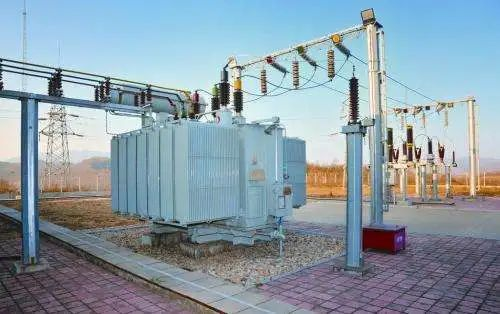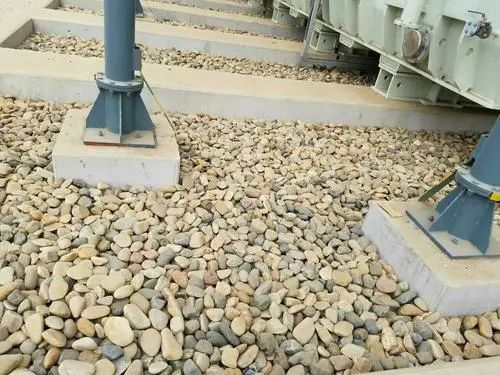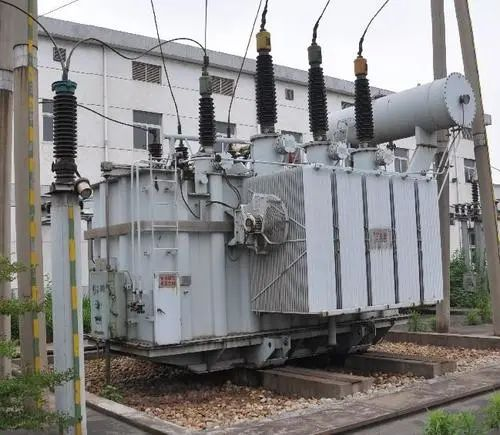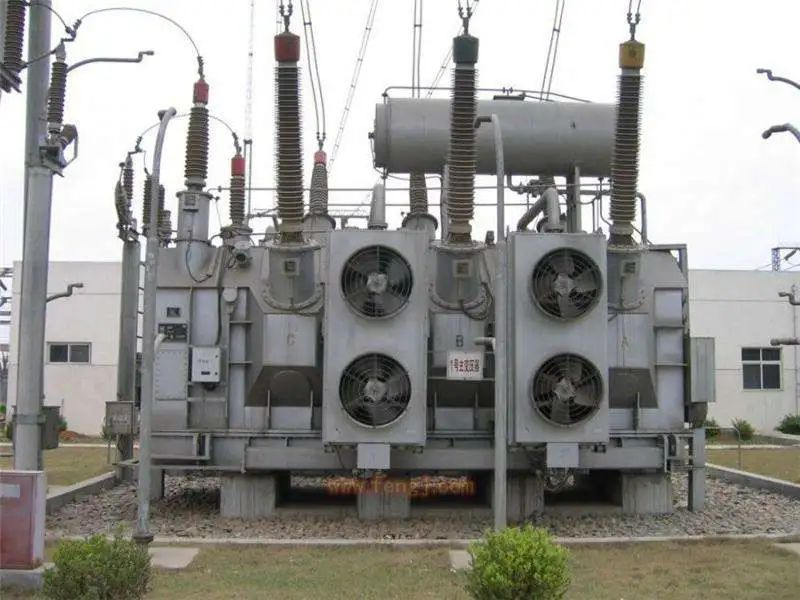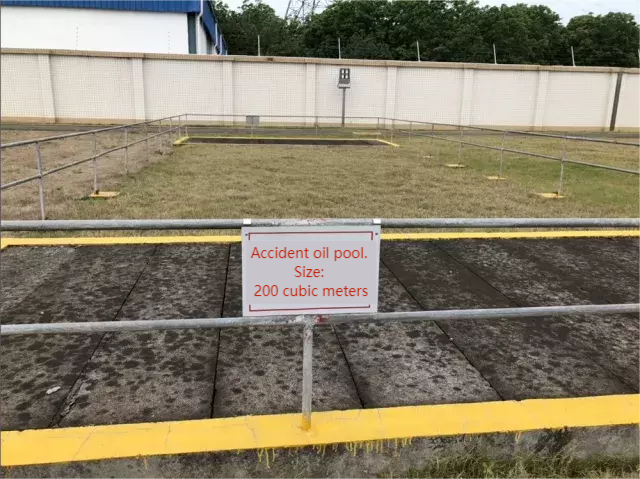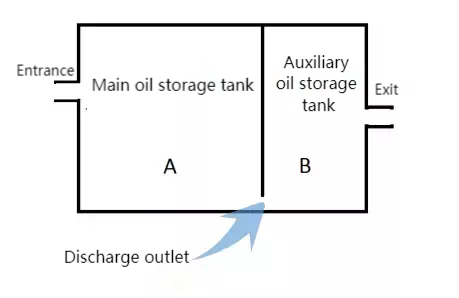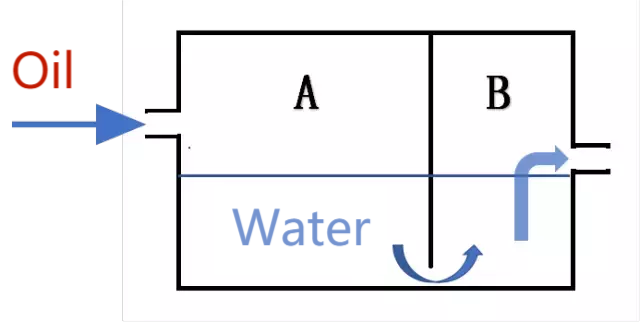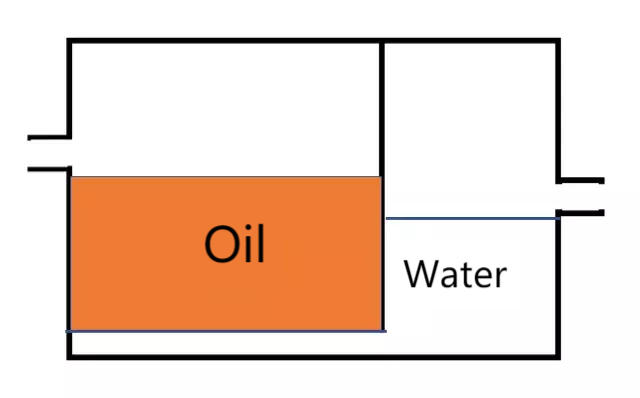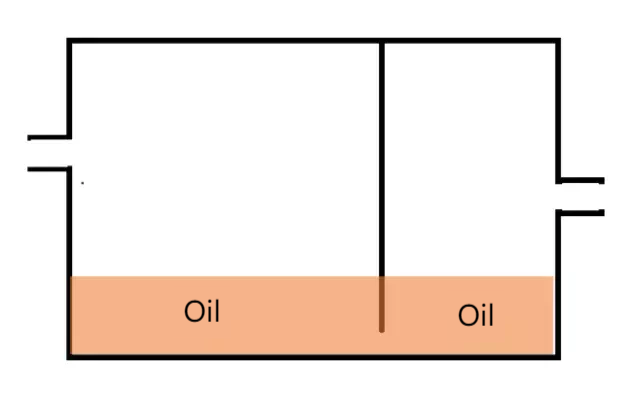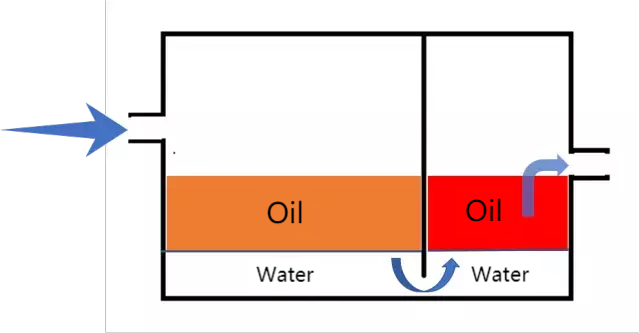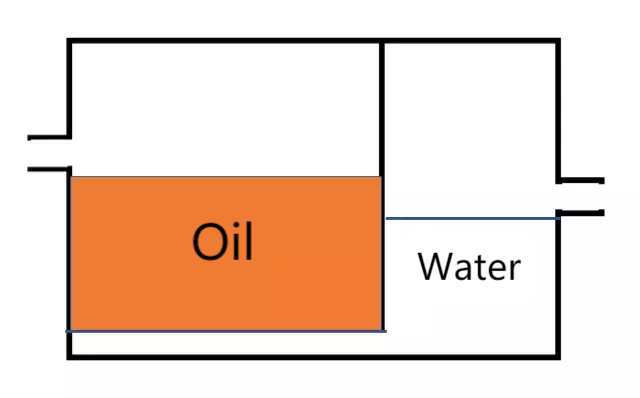We can often see that there are a lot of pebbles under some transformers, so what on earth are these pebbles for? Is it just for beauty?
Our common transformers are divided into dry-type transformer and oil-immersed transformer.
Oil-immersed transformer uses oil as the main insulation means of transformer and relies on oil as cooling medium, such as oil-immersed self-cooling, oil-immersed air cooling, oil-immersed water cooling and forced oil circulation.The main components of transformer are iron core, winding, fuel tank, oil pillow, respirator, explosion-proof tube (pressure release valve), radiator, insulation casing, tap-changer, gas relay, thermometer, oil purifier and so on.
Compared with dry-type transformer, oil-immersed transformer has the advantages of low cost, convenient maintenance, and can solve the problems of large-capacity heat dissipation and high-voltage insulation of transformer, but because the cooling oil of oil-immersed transformer is flammable, it leads to the inherent disadvantage of oil-immersed transformer, that is, flammable and explosive.
At this time, pebbles and other parts came into being.
This part of the transformer is often referred to as the oil unloading pool or pit (or similar name), leading to the accident oil pit or accident oil pool.
In the event of an accident, such as fuel injection or explosion, the oil from the transformer will be unloaded into the unloading pit and then flow to the accident oil pool.Some in the pool make grille, and some do not.If you make a fence, the pebbles will be placed on top of the fence; if you do not make a fence, the pebbles will be placed in the unloading pit. Whether to make a grid or not is related to the type, capacity and voltage level of the transformer.
The following seven factors are mainly considered when placing pebbles under an oil-immersed transformer:
1.After the transformer has been used for a long time, the parts and components may have problems such as aging and leakage, and placing a large number of pebbles can absorb the transformer oil leakage, make the transformer oil flow back to the accident oil pool smoothly, and reduce the accident.
2.In the event of an accident, pebbles can prevent oil spatter in the transformer and avoid explosion.
3.When there is a fire caused by an explosion, pebbles can act as an isolation, prevent the fire from spreading to the ground and help to put out the fire.
4.When the temperature of the transformer is too high, pebbles can be used to cool it.
5.Pebble insulation is convenient for maintenance and inspection by operators.
6.Pebbles have the effect of shock absorption. The effect is the same as the stone on the railway, which can add a buffer.
7.Prevent weeds from growing.
There are clear requirements in the fire code:
1. Outdoor transformers with oil volume above 1000kg and other oil-immersed electrical equipment should be equipped with oil storage pits and oil discharge facilities.
2. The volume of the storage pit shall be determined according to the capacity of 100% or 20% of the equipment oil.When the oil storage pit is set up according to 20% of the equipment oil volume, the bottom of the pit should be provided with an oil discharge pipe to discharge the accident oil into the accident oil storage pit. The inner diameter of the oil discharge pipe should not be less than 100mm, the oil should be discharged quickly in case of accident, and the pipe mouth should be equipped with iron grid filter.
3. In the oil storage pit, there should be a grid with a net distance not greater than 40mm, the upper part of the grid should be laid with pebbles, its thickness is not less than 250mm, and the pebble diameter should be 50~80mm.
When the total accident oil pit is set, its volume should be determined according to the total oil quantity of the largest oil-filled electrical equipment.When a fixed water spray fire extinguishing device is installed, the volume of the total accident oil pit should also consider the amount of water spray and leave a certain margin.
Why is there water in the oil pool in the accident?
So what exactly is the accident oil pool?
Let me first give a brief introduction to the background.
At present, in the main electrical equipment of the substation,
Oil-immersed power transformers are widely used.
When there is a transformer accident, in a short period of time.
A large amount of mineral oil splashed out of the transformer and fell around.
If special protective measures are not taken.
First, it causes pollution to the environment in and around the substation.
Second, it is very easy to cause fire after accident fuel injection.
A large amount of leaked fuel injection will undoubtedly aggravate the accident.
Therefore, no matter from the aspects of environmental protection or fire safety, this part of the oil must be safely discharged into special facilities, so that it can be isolated from outside combustible materials, cooled and stored, and need to be separated and recycled in the future.
The accident oil pool in the general substation looks like this:
Above, the 200 cubic meters written on the nameplate is the total volume of the accident oil pool, not the maximum oil storage volume of the accident oil pool.
The entrance of the accident oil pool is connected with the base oil pit of the main transformer, that is, where cobblestones are laid under the transformer, and the oil of the main transformer is transported to the accident oil pool through the oil discharge pipe.
Well, seeing here, it is estimated that many people will ask again, we have all seen the pebbles under the transformer, but why on earth should we lay the pebbles?
Is it okay to use gold, silver and jewelry?
Okay, so let me explain again.
First of all, there is not so much money.
Back to the point, pebbles actually play an isolation role,
which can help to reduce the fire when the transformer catches fire.
Secondly, after cooling the pebbles, the high temperature transformer oil can also reduce the fire,
which is conducive to fire fighting.
OK, so what is the principle of the accident oil pool?
First, let’s take a look at a section of the accident oil pool.
To put it simply, the accident oil pool is a connector.
In the case of no accident oil, if there is water in the accident oil pool,
the liquid level of the water in the two pools of AB is the same.
Oil and water have different densities,
are immiscible and can be separated by themselves.
Because the density of oil is lower than that of water,
oil floats on the water (I believe anyone who can cook knows it).
Once there is accident oil / discharged into the accident oil pool,
the oil will produce pressure on one side of the main oil storage tank, that is,
pool A, forcing the water to move through the drain to pool B on the other side,
and with the increase of accident oil,
the water will be pressed into the sewage well.
If you still don’t understand it here,
no problem, don’t doubt your IQ,
after all, it’s a bit of a mouthful.
Then let’s use pictures to describe this process succinctly and clearly.
Water is stored in the initial state of the accident oil pool,
the main transformer and high resistance to fire,
start the water spray system,
and a large amount of insulating oil and oil-water mixture
flows into A pool from the inlet.
After static separation in pool A,
the oil floats in the upper part of pool A and the water sinks at the bottom.
Under the action of oil pressure,
through the discharge outlet, enter the B pool and discharge through the outlet.
Finally reach the state of the following Buddhist system,
In this way, the oil can be retained in pool A
to facilitate analysis and utilization after the accident.
If there is no water in the accident oil pool,
a large amount of oil leakage occurs first,
and a large amount of insulating oil enters the oil pool,
then the main transformer and high resistance catch fire,
start the water spray system,
and a large amount of oil-water mixture enters the A pool.
After static separation in pool A,
the water sinks at the bottom and the oil floats in the upper part of pool A.
However, a small amount of oil in the upper part of pool B,
calculated from the oil pool of Dieling Station, will be about 1.7m ³at most
and will eventually be discharged
into the surrounding environment from the exit.
After the B pool oil is discharged,
it will finally reach the previous very Buddhist state
(as shown in the following picture) to meet the design requirements.
Water should be kept in the pool at ordinary times.
According to GB 50229-2006 “Fire Protection Code for Design of Thermal Power plants and Substations”:
when a total accident oil storage tank with oil-water separation measures is installed, its capacity should be determined according to 60% of the capacity of a fuel tank.
It means that this accident oil pool should hold 60% of the oil of a transformer.
So let’s do the math:
For example:
The single-phase oil quantity of # 2 and # 3 main transformers in DL stations is 65t.
# 4 single-phase oil quantity of main transformer is 60.5t.
The oil content of high resistance is even less, which is 13t.
Therefore, it is calculated according to the standard of # 2 and # 3 main transformer phase.
The density of transformer oil is known to be 0.895kg/m ³by investigation.
The oil of 65t is known to be 72.6m ³according to ρ = mstroke V.
60% of the capacity of the fuel tank is 43.56m ³.
The maximum oil storage volume of the accident tank in DL station is calculated to be 47.55m ³> 43.56m ³, so it is in line with the standard.
Seeing here, I believe everyone already understands the structure and principle of the accident oil pool.
Post time: May-04-2023

